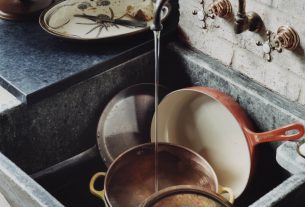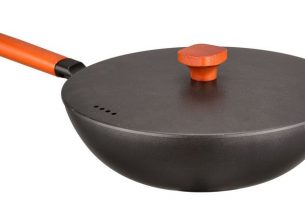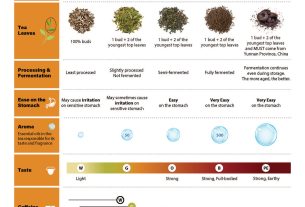Do you ever wonder how bakers achieve that beautiful golden sheen on their bread or pastries?
The secret lies in the magical concoction known as the egg wash.
This simple mixture of egg and liquid has the power to transform ordinary baked goods into glossy, perfectly sealed masterpieces.
But what’s the best way to create this enchanting mixture?
And how can you ensure a flawless application?
Grab your silicone brush and join us on a journey to uncover the secrets of making the perfect egg wash.
how to make an egg wash
To make an egg wash, you can beat one large egg with one tablespoon of water, milk, or cream in a small bowl.
Alternatively, you can beat one large egg white or egg yolk with one teaspoon of the liquid.
The choice of liquid affects the browning and glossiness of the baked goods.
Water produces golden-brown results with some gloss, while heavy cream produces deeply golden-brown results with more sheen.
Using an egg white mixed with water gives a light golden color with a gloss, while an egg yolk mixed with water gives a deep golden color.
Milk or cream enhances the color and gloss.
An egg wash is applied to baked goods using a pastry brush, ensuring an even and thorough coating.
Silicone brushes are recommended to prevent loose bristles and for easy clean-up.
Key Points:
- Beat one large egg with one tablespoon of water, milk, or cream in a small bowl
- Alternatively, beat one large egg white or egg yolk with one teaspoon of liquid
- Choice of liquid affects browning and glossiness of baked goods
- Water produces golden-brown results with some gloss, while heavy cream produces deeply golden-brown results with more sheen
- Egg white mixed with water gives a light golden color with gloss, while egg yolk mixed with water gives a deep golden color
- Milk or cream enhances color and gloss
how to make an egg wash – Watch Video
💡
Pro Tips:
1. Egg wash is not just limited to eggs – it can also be made using alternative ingredients such as milk, buttermilk, or even melted butter.
2. Ever wondered why egg wash gives a glossy finish to baked goods? This is because the proteins in the egg solidify during baking, creating a shiny and attractive coating on the surface.
3. When making an egg wash, using water instead of milk or other liquid enhances browning and creates a crisper texture on the baked item.
4. Adding a pinch of salt to your egg wash mixture can help enhance the flavors of the dish it is applied to.
5. To achieve a softer and more tender crust, some bakers recommend adding a few drops of lemon juice or vinegar to the egg wash. The acidity helps to break down proteins, resulting in a more delicate final product.
1. Introduction To Making An Egg Wash
Egg wash is a versatile mixture that can be used to enhance the appearance of baked goods. It consists of a combination of a whole egg, egg yolk, or egg white with a small amount of liquid, such as water, milk, or cream. This simple mixture can transform ordinary baked goods into beautiful creations with a golden color and glossy finish.
2. Purpose Of Using An Egg Wash
The primary purpose of using an egg wash is to give baked goods an appealing golden color and glossy finish. It accomplishes this by creating a thin layer over the surface of the dough, which undergoes a browning reaction during baking. In addition to enhancing the visual appeal, an egg wash can also serve practical purposes. It helps to seal the edges of filled pastries, preventing them from bursting open during baking. Furthermore, it acts as an adhesive for sprinkling sugar or other toppings onto the dough, ensuring they adhere well throughout the baking process.
3. Benefits Of Using Different Types Of Liquid In The Egg Wash
The choice of liquid in an egg wash can impact the final appearance of the baked goods. Water, for example, produces a golden-brown color with a subtle glossy finish. On the other hand, using heavy cream results in deeply golden-brown results with a more pronounced shine. If you prefer a lighter color with some glossiness, mixing an egg white with water is the way to go. Conversely, if you desire a deep golden color, opt for an egg yolk mixed with water. The addition of milk or cream to the egg wash not only enhances the color but also provides an extra boost of glossiness.
4. Steps To Make An Egg Wash With A Whole Egg And Liquid
Making an egg wash with a whole egg and liquid is a straightforward process. Simply beat one large egg in a small bowl and add one tablespoon of water, milk, or cream. Ensure that the mixture is thoroughly combined to achieve a consistent texture.
5. Importance Of Liquid Choice For Desired Browning And Glossiness
The choice of liquid in the egg wash is crucial for achieving the desired browning and glossiness of the baked goods. By selecting water, you can expect a golden-brown color with some gloss. On the other hand, heavy cream will result in deeply golden-brown results with a more pronounced sheen. The use of an egg white mixed with water provides a light golden color with a glossy finish. Meanwhile, an egg yolk mixed with water produces a deep golden color. It is essential to consider the desired outcome when selecting the type of liquid for the egg wash.
6. Achieving Different Colors With Different Egg Components And Liquids
The color of baked goods can be influenced by the inclusion of different egg components and liquids in the egg wash. Mixing a whole egg with water, milk, or cream can result in a desirable range of colors. An egg white mixed with water will give a lighter golden shade, while an egg yolk mixed with water will produce a deeper golden hue. Experimentation with these combinations can help achieve the desired visual appeal and unleash personal creativity in baked goods.
- Mixing a whole egg with water, milk, or cream can create a range of colors
- Egg white mixed with water yields a lighter golden shade
- Egg yolk mixed with water produces a deeper golden hue
“Experimentation with these combinations can help achieve the desired visual appeal and unleash personal creativity in baked goods.”
7. Enhancing Color And Gloss With Milk Or Cream
Milk and cream can significantly enhance the color and gloss of baked goods when used in the egg wash. The addition of these dairy products can create vibrant and appealing hues, adding an inviting shine to the finished product. For those who desire an extra touch of indulgence in their baked creations, milk or cream is a great choice to enhance both the appearance and flavor.
8. Minimizing Food Waste By Using A Whole Egg
Using a whole egg instead of just an egg white or yolk is a practical way to minimize food waste while preparing an egg wash. By utilizing the entire egg, you can make the most of its nutritional benefits and avoid discarding any unused parts. This approach is not only efficient but also promotes sustainable cooking practices, ensuring that every component of the egg is put to good use.
9. How To Apply An Egg Wash When Baking
When it comes to applying an egg wash, the process is simple yet crucial for achieving optimal results. Using a pastry brush, gently brush the egg wash mixture onto the surface of the dough or pastry. It is essential to apply the mixture evenly, ensuring that no areas are missed or overloaded. Uneven application can lead to an inconsistent appearance and potentially affect the taste of the baked goods. Take care to prevent pooling, which can result in an unappealing and undesirable outcome.
10. Recommended Tool For Applying The Egg Wash
To achieve easy application and clean-up, it is recommended to use a silicone brush when applying the egg wash. Unlike traditional brushes with bristles, silicone brushes prevent loose bristles from contaminating the baked goods. Additionally, they are easy to clean, ensuring that the brush is ready for future uses without any residue or cross-contamination.
💡
You may need to know these questions about how to make an egg wash
What is a proper egg wash?
A proper egg wash is a mixture of whisked egg combined with a small amount of liquid, such as water, milk, or cream. This mixture is applied onto baked goods just before they are put into the oven. The purpose of an egg wash is to enhance the appearance and texture of the finished product. The proteins in the eggs contribute to a glossy finish and help to seal the dough, while the liquid added to the wash helps to thin it out and create a more even application.
Is egg wash better with milk or water?
Egg wash, whether made with milk or water, both have their unique advantages when it comes to enhancing baked goods. While an egg wash with milk adds a nice shine, and a water-based egg wash gives a more golden appearance, the choice ultimately depends on personal preference. Experimenting with different egg washes, I brushed three whole egg washes on bread, and the results were equally impressive. Whether you opt for milk or water in your egg wash, both options are sure to elevate the overall appearance of your baked creations.
How do you make egg wash if you don’t have eggs?
If you don’t have eggs on hand, a great alternative for making egg wash is using milk or heavy cream. For every ¼ cup of egg wash needed in the recipe, you can brush the baked goods with 1 tablespoon of milk or heavy cream. This will provide a similar richness and help achieve a desirable golden color on your pastries or breads.
Is egg wash just for looks?
While egg wash certainly adds visual appeal to baked goods, it serves a greater purpose than just looks. Beyond providing an attractive golden brown color and a subtle shine, an egg wash helps achieve a crispy texture and acts as a binder. The proteins in the egg create a thin, protective barrier that helps seal in moisture, resulting in a more desirable, crispy crust. Additionally, the egg wash helps bind ingredients together, ensuring that the different components of the baked goods hold their shape during baking. So, while egg wash enhances the appearance, it also plays a crucial role in achieving the desired texture and structure of the final product.
Reference source
https://www.realsimple.com/food-recipes/cooking-tips-techniques/how-to-make-an-egg-wash
https://www.spatuladesserts.com/egg-wash/
https://www.thepioneerwoman.com/food-cooking/cooking-tips-tutorials/a84298/egg-wash-101/
https://www.purewow.com/food/egg-wash-substitute



